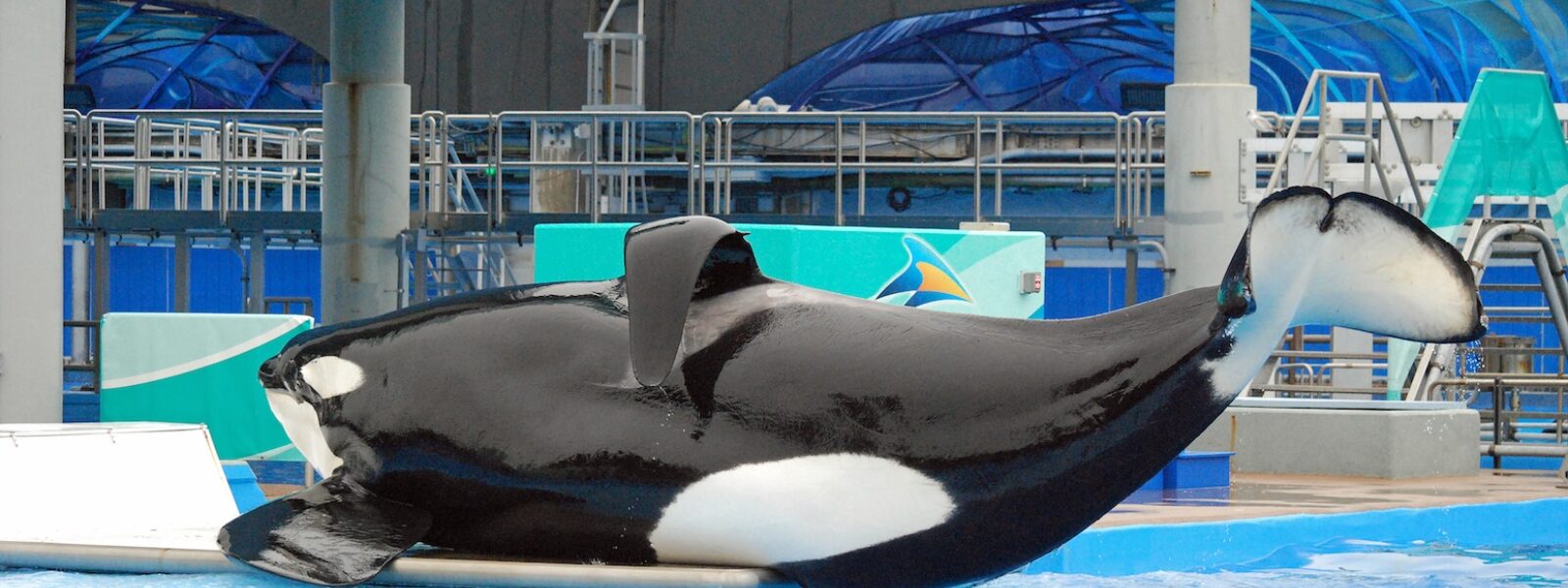

This is another sad story from SeaWorld.
SeaWorld announced on Tuesday, March 8th, that Tilikum, the large male orca held at SeaWorld Orlando who was implicated in the deaths of three people, is ill and may not recover.
Ironically, the announcement was made by SeaWorld on their SeaWorld Cares website that had been set up specifically to counter the claims of the documentary Blackfish, which featured Tilikum and his troubled past.
“Our teams are treating him with care and medication for what we believe is a bacterial infection in his lungs," SeaWorld’s statement claims. "However, the suspected bacteria is very resistant to treatment and a cure for his illness has not been found.”
But Dr. Lori Marino of the Kimmela Center is not convinced that Seaworld has taken good enough care of the whale. “Tilikum is succumbing to the most common cause of death in captive cetaceans: pneumonia...while wild orcas do die of pneumonia, its prevalence in captive cetaceans begs the question: How are they contracting this disease in the protected environment of captivity?”
SeaWorld estimates that Tilikum is 35 years old, what they claim as being “at the high end of the average life expectancy for male killer whales.” In fact, male orcas in the wild live on the average of 35 years, but some are thought to reach up to 60 years old.
Like many male orcas at SeaWorld and other marine parks, Tilikum’s teeth may be the reason for his illness. Male orcas tend to chew on metal gates and the cement borders in their tanks, resulting in the tips of the teeth breaking off. As the broken teeth present a danger of infection, the teeth are drilled out. Orcas, like other marine mammals, cannot be anesthetized because they would stop breathing, so the drilling occurs while the orca is fully awake to the pain.
Because the now hollowed out teeth provide an avenue of infection, they must be manually cleaned out every day by park staff to avoid bits of fish getting inside the tooth and rotting. Like many orcas in captivity, Tilikum has likely been on a constant regimen of antibiotics to prevent infections.
Marino points out the SeaWorld veterinarians should have foreseen and planned better planned for. "In the Oath adopted by the American Veterinary Medical Association, veterinarians – including, presumably, the veterinarians at SeaWorld – solemnly swear 'to use my scientific knowledge and skills for the benefit of society through the protection of animal health and welfare, the prevention and relief of animal suffering, the conservation of animal resources, the promotion of public health, and the advancement of medical knowledge.' But the facts stated tell a story of a solemn responsibility distorted by industry demands. It is time for the SeaWorld veterinarians to stop acting like spin doctors and start acting like real doctors."
Tilikum may well die soon, and that would be a loss for captivity. The sad fact is that all of the orcas at SeaWorld and other marine parks around the world, along with all of the dolphins, belugas and pilot whales, are destined for the same end – a life spent in boredom and stress, followed by an early death.
SeaWorld won’t acknowledge it, but the proof is in Tilikum.
